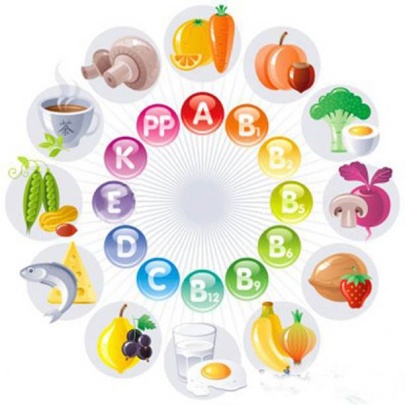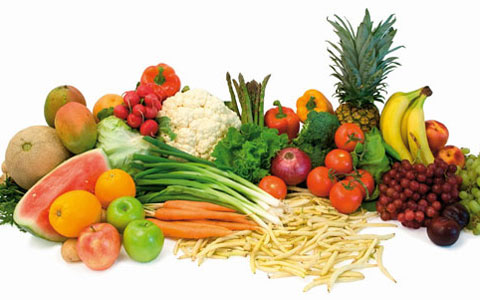 Vitamins (Latin vita = life) represent any complex organic substance that occurs naturally in plant and animal life and is essential for metabolic processes.
Vitamins (Latin vita = life) represent any complex organic substance that occurs naturally in plant and animal life and is essential for metabolic processes.
The human body in sufficient quantity can not synthesize any vitamin, and some can not and does not synthesize and must be entered with the diet.
Today’s production and processing of food along with the industrial pollution of the environment and stressful lifestyle that leads, determines the need for additional quantities of vitamins.
In the human body as co-enzymes in many enzyme systems occurring metals and vitamins (or substances derived from vitamin, eg. Thiamine pyrophosphate arising in reaction between phosphoric acid and thiamine).
Molecule of alcohol dehydrogenase, which is liver catalyses the oxidation of alcohol in the acetate contains two atoms of zinc. Co-enzymes occur in more than two hundred and enzyme systems. All other vitamins except vitamin C, also serve as co-enzymes.

Some are soluble vitamins (A, D, E, F and K) and are absorbed into the human body. Others are soluble in water and is absorbed in minimal quantities. All vitamins and trace elements must be taken with food or after eating several times a day, because in this way significantly increases the absorption.
A, D, E, F and K vitamins should be taken with fatty foods. In case of lack of a vitamin other difficult to use. When giving a specific combination of vitamins to a certain disease, you should always be given a multivitamin preparation.
All are excreted in urine other than vitamins A, D and E, which are mainly excreted throuout the faeces. Since the water-soluble vitamins are excreted after taking four hours to ensure continuous action recently produced in the form of micro-granules, of which gradually released.
Exquisite therapeutic efficacy without the side effects or with minimal side effects (A, B3, B6, D i K) overdose, his explanation have in fact that constitute normal parts of human metabolism.
In many cases treatment can effectively act solely in vitamins. Their application is not in contradiction simultaneously providing other therapy, on the contrary side effects with the use of vitamins are reduced to a minimum.
During the treatment of hypovitaminosis use high protein and high vitamin diet. It should be accompanied vitamins spread indications at doses 5-10 times the need for maintenance. Diet can also lead to a lack of certain vitamins and trace elements. Diet rich in protein and impoverished in carbohydrates leads to a lack of A, C, iron and calcium. Balanced diets lead to a lack of B complex and calcium.

